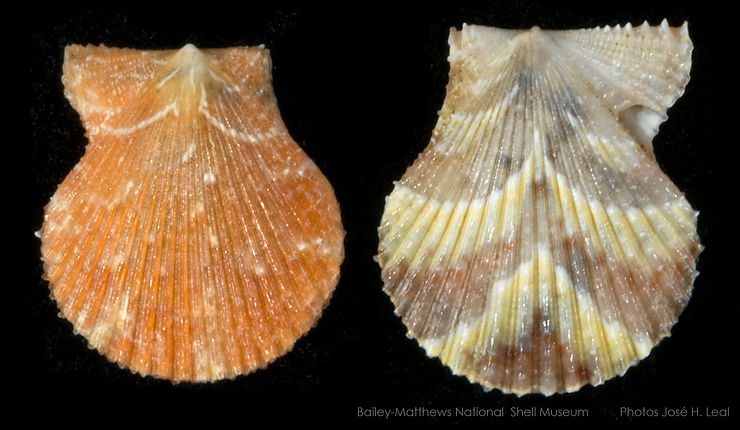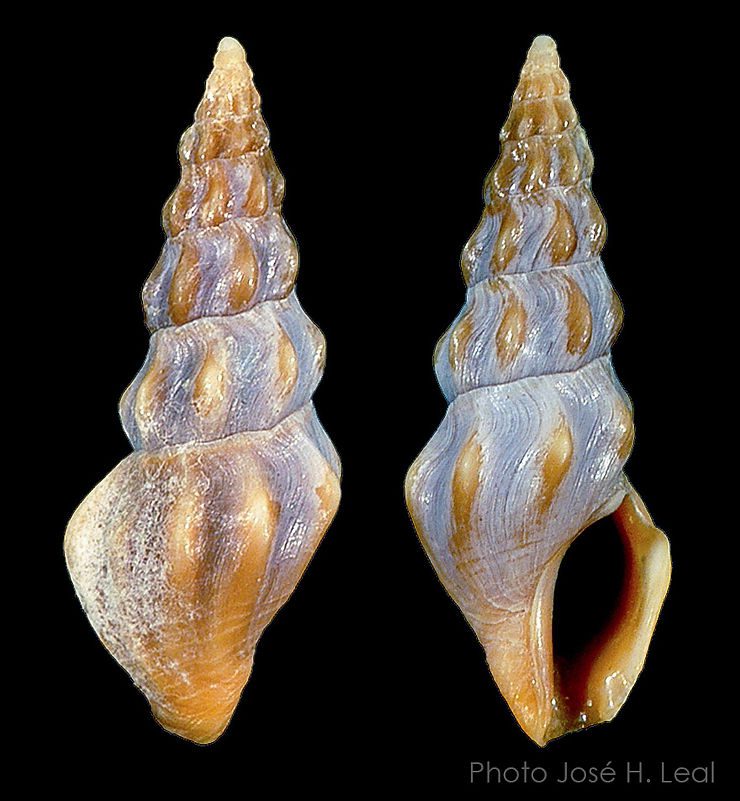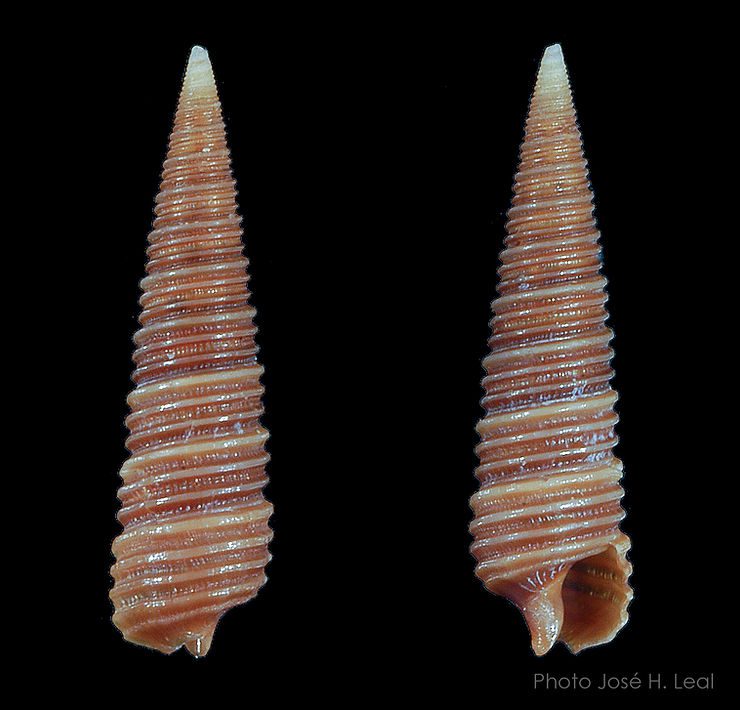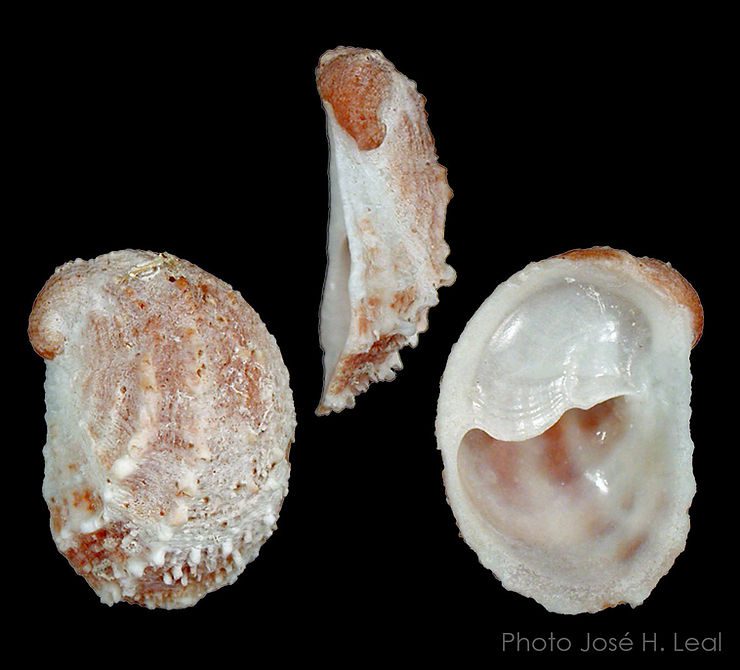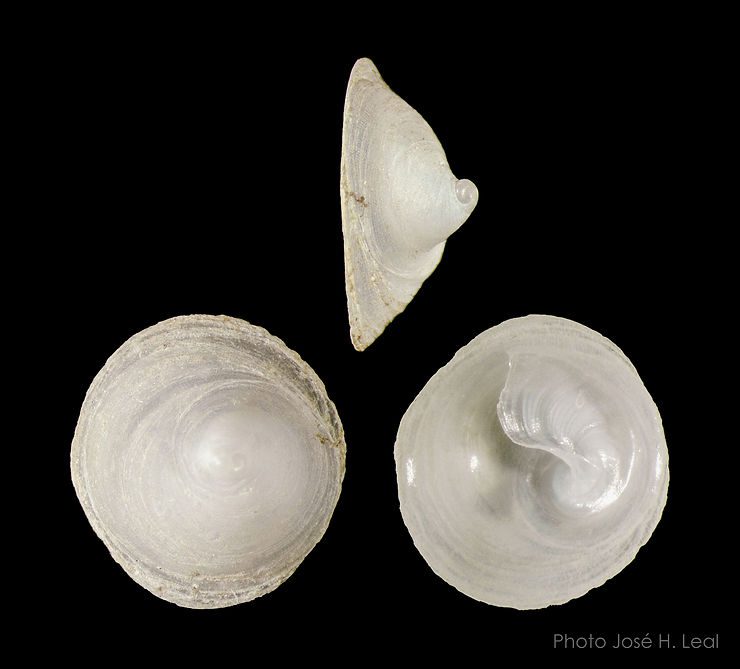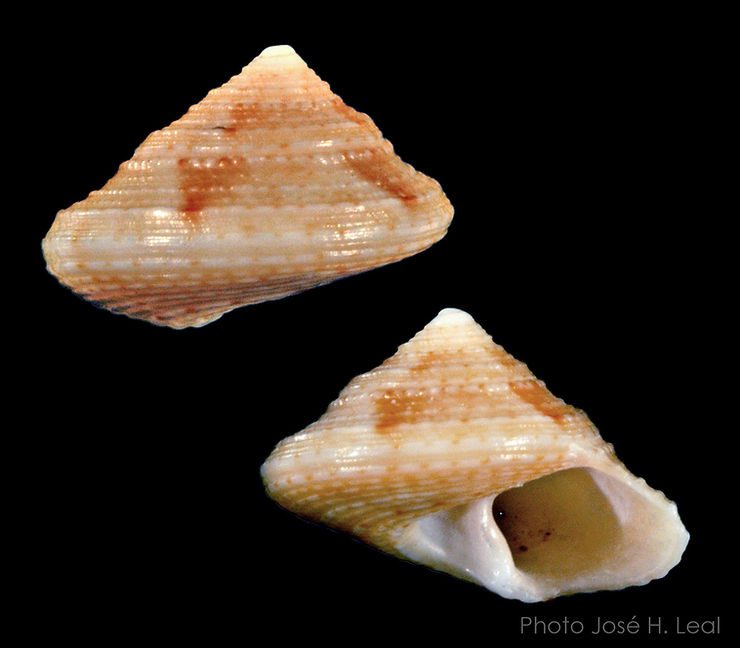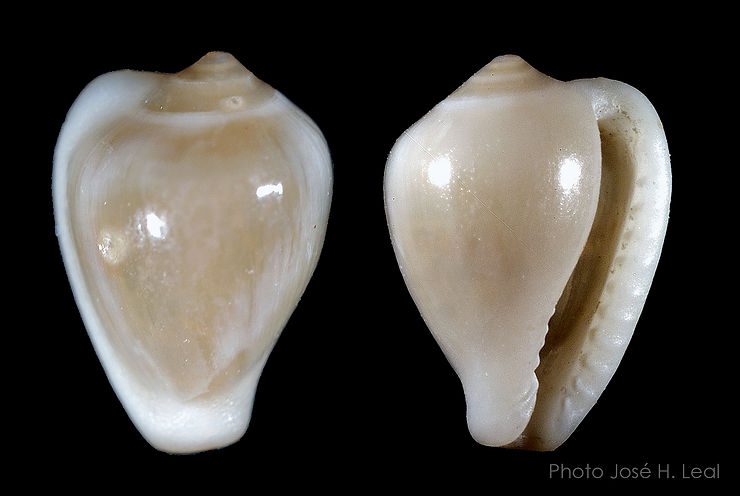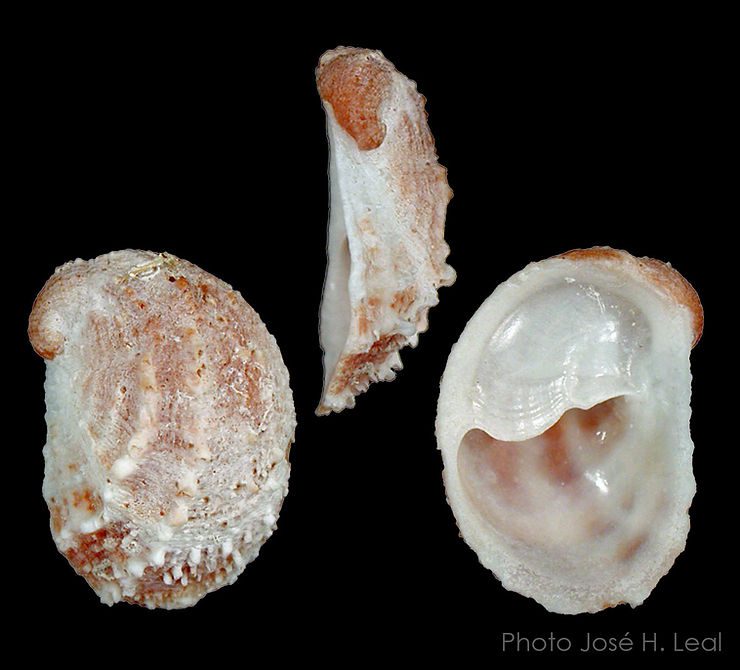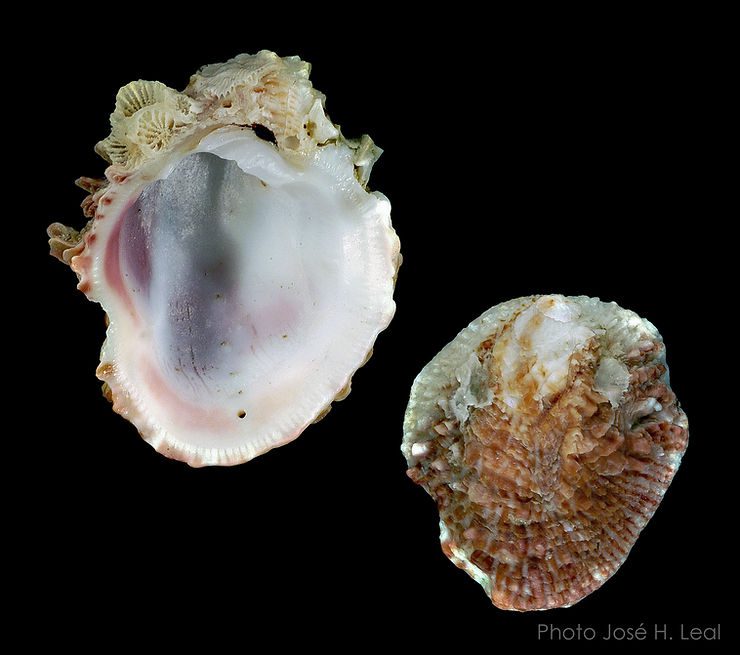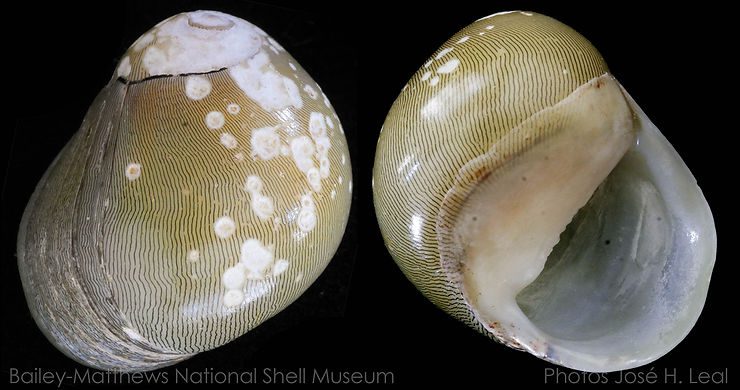
The Olive Nerite
A rare find locally on Sanibel-Captiva, the Olive Nerite, Neritina usnea (Röding, 1798), is relatively common in other parts of Florida and the Gulf of Mexico. The species is very variable in color and shape, but usually presents a pattern of closely set, wavy axial (“vertical”), dark lines against a light-olive background. The 0.6-inch shell in the photos was found on the beach of Captiva by Kimberly Nealon, on the first weekend after Hurricane Irma’s visit. Given that the species prefers to li
